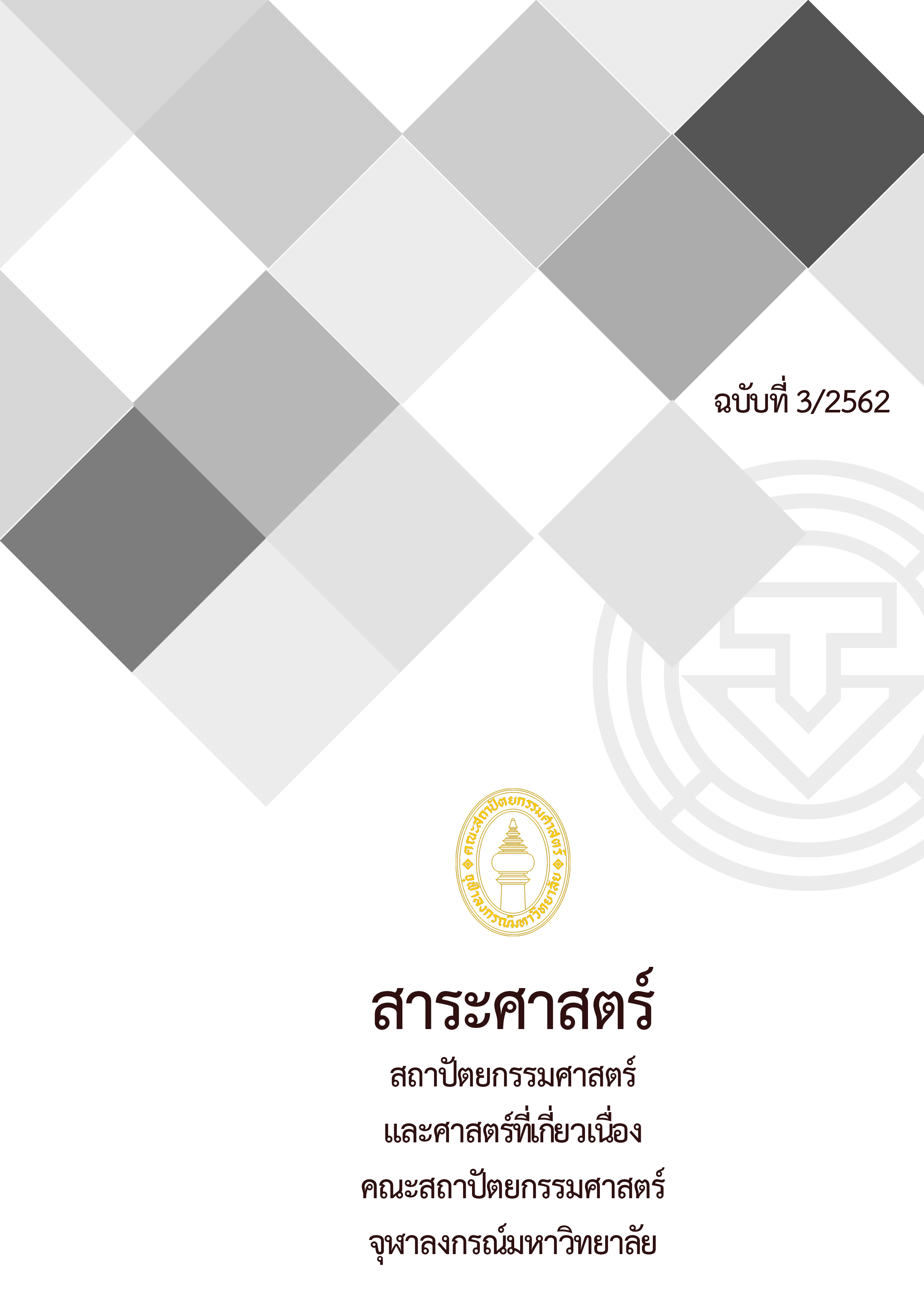Adaptive Reuse of Historic Buildings to Creative Learning Space: Case Studies of The Buildings in The Bangkok Conservation Area
Main Article Content
Abstract
Adaptive Reuse is one of the conservation methods to reuse abandoned-historic building. It can also refer to the way of adjustment, reusing, upgrade, or change the usability of abandoned-historic building in order to support new requirement.
The purpose of the study is to explore the concepts adaptive reuse for historic buildings and The processes in creative learning space with three cases studies of the buildings in Bangkok conservation Area. Those are Thailand Creative and Design Center, Bank of Thailand Learning Center, and Bangkok City Library. This study applied “Adaptive Reuse” and “Creative Learning Space” as the theoretical framework for the research.
The study revealed that all case studies followed the adaptive reuse process which consist of initial project planning stage, planning stage, implementation stage, and monitor operations stage. In addition, the three case studies brought modern architectural style buildings that transfer from used offices to be the new public space which is under the historic building in the form of "learning space"with
"co – working space" as designed differently for each project. Each project has chosen the level of conservation which consist of preservation, renovation, adaption, and remodeling. Even though these buildings will be changed in structure, space plan, service and stuff but the buildings still maintain appearances.
Finally, Adaptive reuse of Historic building to Creative learning space bring to the conclusion that adaptive reuse is not only just a way to preserve the building to its original condition but also gives importance to the value and authenticity of the historic building. Along with changing the usage according to current needs efficiently.
Article Details
References
ปรามินทร์ เครือทอง. “ตึกแถวสองฟากถนนราชดำเนิน “ป้อมปราการ” ประชาธิปไตย.” สืบค้น 10 ตุลาคม 2561.
https://www.silpa-mag.com/history/article_3260.
วิมลรัตน์ อิสระธรรมนูญ. “คำศัพท์และวิธีการอนุรักษ์: เอกสารประกอบการสอนวิชาการอนุรักษ์ สถาปัตยกรรมและสิ่งแวดล้อม.” กรุงเทพฯ: คณะสถาปัตยกรรมศาสตร์ จุฬาลงกรณ์มหาวิทยาลัย 2560.
wurkon. “Creativity Workflow สภาวะการทำงานที่ก่อให้เกิดความคิดสร้างสรรค์.” สืบค้น 10 ตุลาคม 2561.
https://www.wurkon.com/research/15.
อุบล ชาญปรีชาสมุทร. “บางเกาะ-บางกอก พิพิธภัณฑ์การเรียนรู้แห่งชาติ คลังสมองของชาวไทย.” เดลินิวส์, 31 มกราคม
2561, 4.
Boonprasong, P. “The Development of Adaptive Use of Historic Building in Thailand.” International Conference on Research and Design in Architecture and Related Fields, Bangkok, December 19-20, 2016.
Brand, S. How Buildings Learn: What Happens after They're Built. London: Penguin, 1995.
Douglas, J. Building Adaptation. Oxford: Butterworth-Heineman, 2006.
Feilden, B. Conservation of Historic Buildings. London: Routledge, 2007.
Thoring, K., Mueller, R., Badke-Schaub, P., and Desmet, P. A. “Creative Learning Space Development Toolkit: Empirical Evaluation of a Novel Design Method.” Paper presented at the DS 87-9 Proceedings of the 21st International Conference on Engineering Design (ICED 17) Vol 9: Design Education, Vancouver, Canada, August 21-25, 2017.


